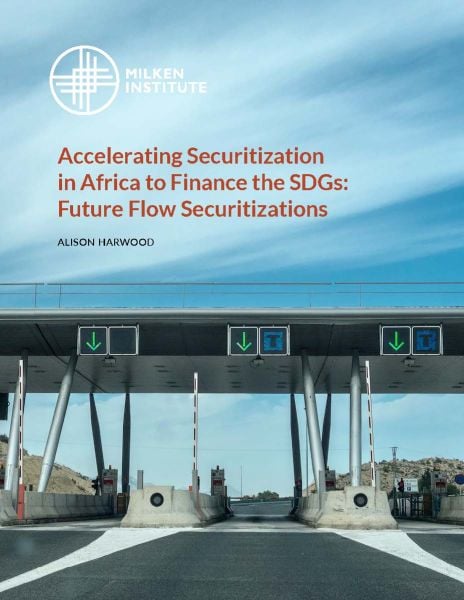
Accelerating Securitization in Africa to Finance the SDGs: Future Flow Securitizations
The sustainable development goals (SDGs) set an ambitious development agenda to reduce poverty by 2030 and an equally ambitious agenda to finance them. An estimated $3 trillion to $5 trillion is needed annually, and of that about $2 trillion to $3 trillion from the private sector—putting the spotlight on raising private financing for development to previously unheard of levels and in short time frames.
Securitization is highlighted as a key instrument for mobilizing private capital to finance the SDGs because it can create risk/return structures and large-scale transactions that can appeal to institutional investors and help move financing from millions to billions—and hopefully trillions. Many SDGs—such as for renewable energy, toll roads, health care, affordable housing—generate the types of revenues that can potentially be securitized and borrowed against.
Financing the SDGs is urgent, the institutional investor base interested in SDG investing is growing rapidly, and governments like the EU are creating frameworks for how to grow securitization prudently. COVID-19 is highlighting inequalities throughout Africa, strengthening the case for securitization and also that large-scale, creative, and collaborative change can happen when needed. That urgency and deliberation need to be applied to accelerating securitization’s growth.
This paper reviews why future flow securitizations (FFS) can be an important starting point. It begins with an overview of securitization’s basics and importance for the SDGs. Next, the paper discusses the benefits of FFS, including examples of FFS’s emerging use in Africa, before suggesting ways to move forward.

